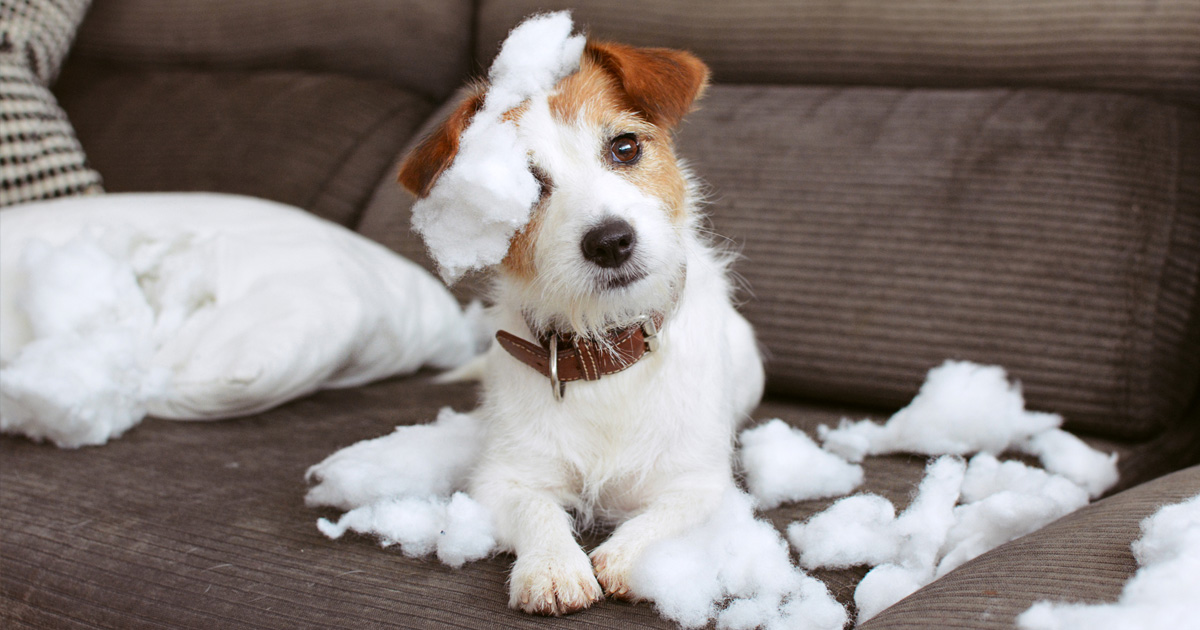Easing Separation Anxiety in Dogs

Common Signs of Separation Anxiety in Dogs
Incessant howling. Gouges in the wall. A shredded sofa. Poop on the floor. No, it’s not another one of your roommate’s late night keg parties, it’s your dog’s separation anxiety. And while light chewing, and barking at the mail carrier is normal, house soiling, excessive howling, and frantic attempts to escape are all classic signs of separation anxiety.
Causes of Separation Anxiety
It’s easy to understand how your dog would miss you. You’re pretty cool, after all. You’re the one that tops off the food bowl and takes him by his favorite fire hydrant ever morning. But you also practically throw a ticker tape parade every time you walk in the door. Seriously, Justin Beiber doesn’t get that kind of attention at the teen music awards, and these hyped up reunions can actually intensify your dog’s anxiety when you’re gone.
Change of routine, boredom, and lack of exercise are also common sources of separation anxiety, and shelter dogs suffer far more frequently than dogs that were raised by a single family since puppyhood. Severe separation anxiety often results when a dog loses an important person or family, which can happen repeatedly to some shelter dogs.
Treating Separation Anxiety
Exercise, discipline, and leadership. They served you well on Paris Island, and they’ll also build confidence in your dog and trust that you’ll always come home. Obedience training begun at an early age provides structure, and sets expectations for good behavior. Now drop and give me 20!
Counter conditioning – associating something good with a stressful situation or person – can also help reduce mild separation anxiety in your dog. With the help of a therapist and counter conditioning, you finally conquered your fear of alien abduction by eating raw cacao nibs while binge watching E.T. for an entire weekend. Try leaving your dog a puzzle toy stuffed with peanut butter or another healthy snack before heading out to work. But remember that for this counter conditioning method to be effective, it should take her at least thirty minutes to finish the treat, and that dogs suffering from moderate or severe separation anxiety are often unable to eat when left alone.
Treating moderate or severe separation anxiety requires patience and methodical steps that gradually desensitize your dog to his fear of being alone. For many dogs, the anxiety begins with departure clues, like putting on makeup or grabbing your car keys. He knows that when you set the baby in her high chair, camping out nearby could result in a tasty ground score. He also knows that when you put on your boots, you’re headed out the door. Conditioning can remove the negative associations with these clues. Instead of walking out the door, take your keys over to the piano and belt out “Bohemian Rhapsody”. Put on eyeliner, and then cozy up with on the couch with a crossword puzzle. This method takes time, but eventually his associations with these cues will change from “she’s leaving me” to “She’s losing her mind, but at least she’s not leaving.”
Then gradually start adjusting your dog to your absence. Begin with out of sight sit-stay exercises at a bedroom door, working up to an exit door. Slowly work short absences of just a few seconds into the exit routine – taking special care to remain calm and relaxed so your dog perceives no difference in the transition. Keep these to a simple hello or goodbye and a pat on the head. Save the drama for the next time your 10th grader comes home at 3am.
Extend the length of your absences a few minutes at a time until he’s okay for stretches of forty minutes, at which point you can increase the time by increments of five or ten minutes until he’s able to stay home alone for 8 hours or more.
Above all be patient and remember that the process can take time. Scolding or punishing your dog for symptoms of separation anxiety will only make the problem worse.